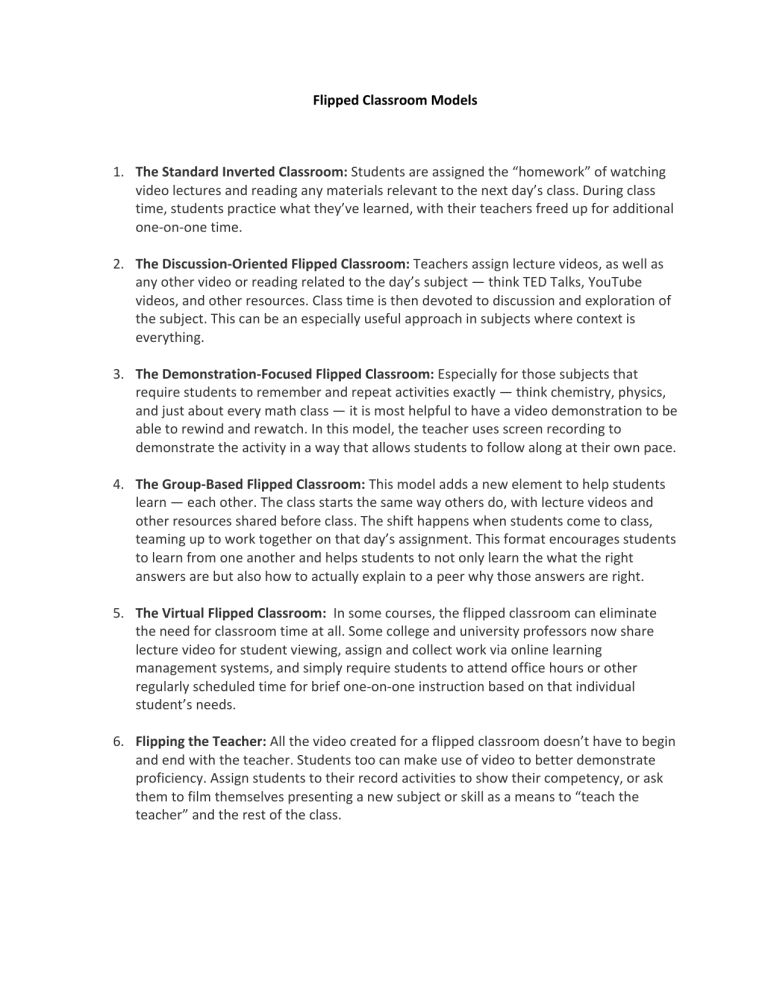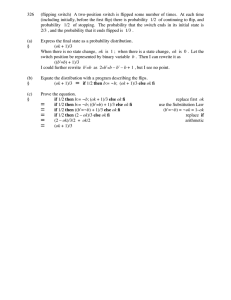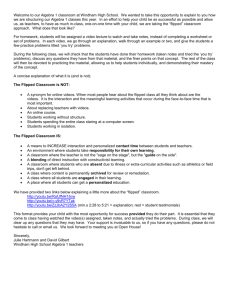
Flipped Classroom Models 1. The Standard Inverted Classroom: Students are assigned the “homework” of watching video lectures and reading any materials relevant to the next day’s class. During class time, students practice what they’ve learned, with their teachers freed up for additional one-on-one time. 2. The Discussion-Oriented Flipped Classroom: Teachers assign lecture videos, as well as any other video or reading related to the day’s subject — think TED Talks, YouTube videos, and other resources. Class time is then devoted to discussion and exploration of the subject. This can be an especially useful approach in subjects where context is everything. 3. The Demonstration-Focused Flipped Classroom: Especially for those subjects that require students to remember and repeat activities exactly — think chemistry, physics, and just about every math class — it is most helpful to have a video demonstration to be able to rewind and rewatch. In this model, the teacher uses screen recording to demonstrate the activity in a way that allows students to follow along at their own pace. 4. The Group-Based Flipped Classroom: This model adds a new element to help students learn — each other. The class starts the same way others do, with lecture videos and other resources shared before class. The shift happens when students come to class, teaming up to work together on that day’s assignment. This format encourages students to learn from one another and helps students to not only learn the what the right answers are but also how to actually explain to a peer why those answers are right. 5. The Virtual Flipped Classroom: In some courses, the flipped classroom can eliminate the need for classroom time at all. Some college and university professors now share lecture video for student viewing, assign and collect work via online learning management systems, and simply require students to attend office hours or other regularly scheduled time for brief one-on-one instruction based on that individual student’s needs. 6. Flipping the Teacher: All the video created for a flipped classroom doesn’t have to begin and end with the teacher. Students too can make use of video to better demonstrate proficiency. Assign students to their record activities to show their competency, or ask them to film themselves presenting a new subject or skill as a means to “teach the teacher” and the rest of the class.



